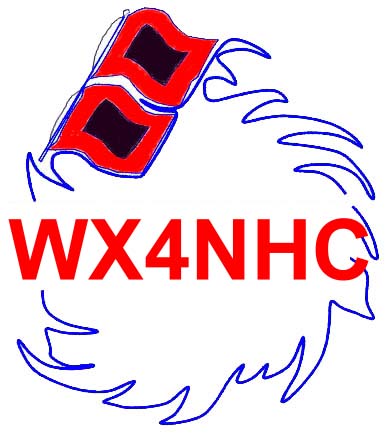
Amateur Radio Station
at the
National Hurricane Center

AMATEUR RADIO - AUTOMATIC WEATHER STATIONS (APRS)
Volunteers at WX4NHC, the amateur radio station at the National Hurricane Center in Miami, Florida, are working to increase the volume of measured weather data for both hurricane specialists and severe weather meteorologists.
We encourage you to install either a manual or preferably an automatic weather station and to use APRS to connect it to the network of other stations. Automatic amateur weather stations have been installed all over the US and abroad, in the Key West - Palm Beach coastal corridor there is a chain of them. These are supported by an extensive digipeater network that uses APRS.
Radio amateurs on many islands of the Caribbean have similar projects. Real-time weather from Haiti and Puerto Rico can be seen using APRS on 10.151 MHz (lower sideband). NOAA, in conjunction with WX4NHC, plans to expand the amateur radio weather station network in the Caribbean Islands.
Conversations have been held with meteorologists at the Weather Service and the authors of APRS software to develop standards for monitor display and data archiving.
A prototype solar powered amateur automatic weather station has been designed by the State of Florida Solar Energy Center and is currently being tested by members of WX4NHC.
Information from other areas working with their local Weather Service offices to collect measured weather data from radio amateurs would be greatly appreciated. WX4NHC can be contacted through e-mail at:
The hardware requirements of a typical weather
station installation are listed below.
ITEM DESCRIPTION
Anemometer and wind direction element should be
mounted approximately 10 feet above the high point of the
building.
The mast should be metal and grounded. (heavy wall, 1 - 1 1/4 in
diameter) The top 6 " should be PVC pipe.
Optimum height of anemometer is 33 feet above ground.
Rain gauge should be in the clear and away from structures that
would block blowing rain.